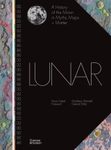By
Leon (NHBS Catalogue Editor)
18 Apr 2019
Written for Paperback

The idea of an asteroid or comet impacting with planet Earth and causing a catastrophe for mankind has long been given a cold shoulder in scientific circles. But with the notion that the dinosaurs met their fate at the hand of a rather large space rock it does not seem so outlandish anymore. NASA has started monitoring near-earth objects, but is there really something we could do if one was heading our way? Astrophysicist and science writer Andrew May provides a delightful little primer on these questions with
Cosmic Impact, injecting this oft-hyped topic with a healthy dose of realism.
The story of the extinction of the dinosaurs and its link to the Chixculub impactor has featured repeatedly on this blog. Walter Alvarez told the story in his own words in
T. rex and the Crater of doom, and it featured as one of the big five mass extinctions in Brannen’s
The Ends of the World, while any dinosaur book worth its salt features the topic (see e.g. my reviews of
The Rise and Fall of the Dinosaurs and
The Dinosaurs Rediscovered). Now, if someone could please show the dinosaurs the door, because there is far more to the topic than them, or the bad science shown in disaster movies such as
Deep Impact and
Armageddon.
May starts off with a short history of comets and asteroids. It obviously took a while before shooting stars were recognised for what they were: not bad omens, but hunks of space junk. Even so, the possibility of cosmic impacts was long dismissed. Although May doesn’t mention him by name, it was Scottish geologist Charles Lyell’s doctrine of uniformitarianism (May instead calls it gradualism in this book) that long held sway and pretty much ruled out (cosmic) catastrophes. The pseudoscience espoused in the 1950s by psychologist Immanuel Velikovsky (see
The Pseudoscience Wars) also did not help its credibility. But, as documented at length elsewhere, it eventually became an accepted idea (see my reviews of
Four Revolutions in the Earth Sciences and
Cataclysms: A New Geology for the Twenty-First Century).
So, we have dealt with the dinosaurs, and we have the idea on the table as something to be taken seriously. But before May can start talking about the threat to human civilization and what, if anything, can be done to avert it, there is a whole lot of astronomy to be dealt with first.
This is where I feel the book does an excellent job introducing the basic science, although he does seem to falter right at the start in explaining the differences between meteors, asteroids, and comets. Clear-cut definitions have been formulated elsewhere, but May instead focuses on the caveats, pointing out that these names were coined before people really understood what they were talking about. Furthermore, the more we study them, the more their properties seem to overlap. That’s all fair enough, but after a few pages I still was not quite clear on the difference between asteroids and comets.
Luckily, the more complex topics of the all-important orbits (which determine whether they will cross Earth’s path), the underlying celestial mechanics, and its terminology are all lucidly explained, including helpful diagrams. May briefly covers the different sources for all these rocks (the nearby asteroid belt, the more distant Kuiper belt, and the still more distant and hypothetical Oort Cloud) and the likelihood of impact. He is quick to inject a healthy dose of realism and sobering numbers here, because even the asteroid belt is, in reality, not particularly densely packed with debris. No matter how
Star Wars depicted it, the Millenium Falcon could easily coast through this with the crew snoozing and no one would be the worse for wear.
But impacts do happen. Just look at the moon, May says. Although Meteor Crater in Arizona was long recognised as the only clear crater on the face of the Earth, many others have now been found. Coverage of this topic would not be complete without mention of the 1908 Tunguska Event in Siberia (see also
The Tunguska Mystery, although May thinks there little mystery left here), the 2013 Chelyabinsk meteor, or the 1994 impact of the Shoemaker-Levy 9 comet on Jupiter (see
The Great Comet Crash).
Now that cosmic impact is a topic that can be brought up again in polite company, new wild ideas have been quick to follow. May gives a quick and appropriately sceptical overview of the revival of the idea of panspermia (comets seeding planets with life), epidemics-from-space, the alleged periodicity of mass extinctions and its link to cosmic phenomena (see the latter part of
Cataclysms but especially
Dark Matter and the Dinosaurs), or the idea of a dark star companion to our sun (see
The Nemesis Affair).
But, to repeat, impacts do happen, and May briefs the reader on NASA’s efforts at monitoring so-called near-earth objects, and the fantastic missions that landed on asteroids. Finally, he seriously considers the various options we have to defend ourselves from incoming asteroids and comets (blow them up, deflect them, redirect their course?).
Especially the topic of planetary defence has tickled the imagination with a host of books on it in recent years, such as
Near-Earth Objects and
The Asteroid Threat. And
Cosmic Impact is not the final word on the topic, with
Fire in the Sky due later this year.
Of all these, May’s book is the least expensive. At 155 pages his coverage of topics is well-balanced, though necessarily cursory in places. Given the brief of the
Hot Science series this book is part of, that is only to be expected though. What it does deliver is a fast-paced and very readable book that avoids hype and is cautiously sceptical where it needs to be. A book that is sure to whet the appetite.


































